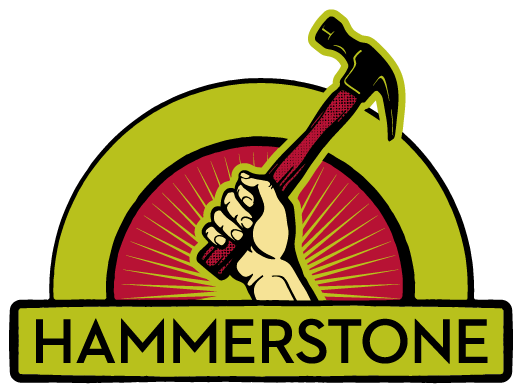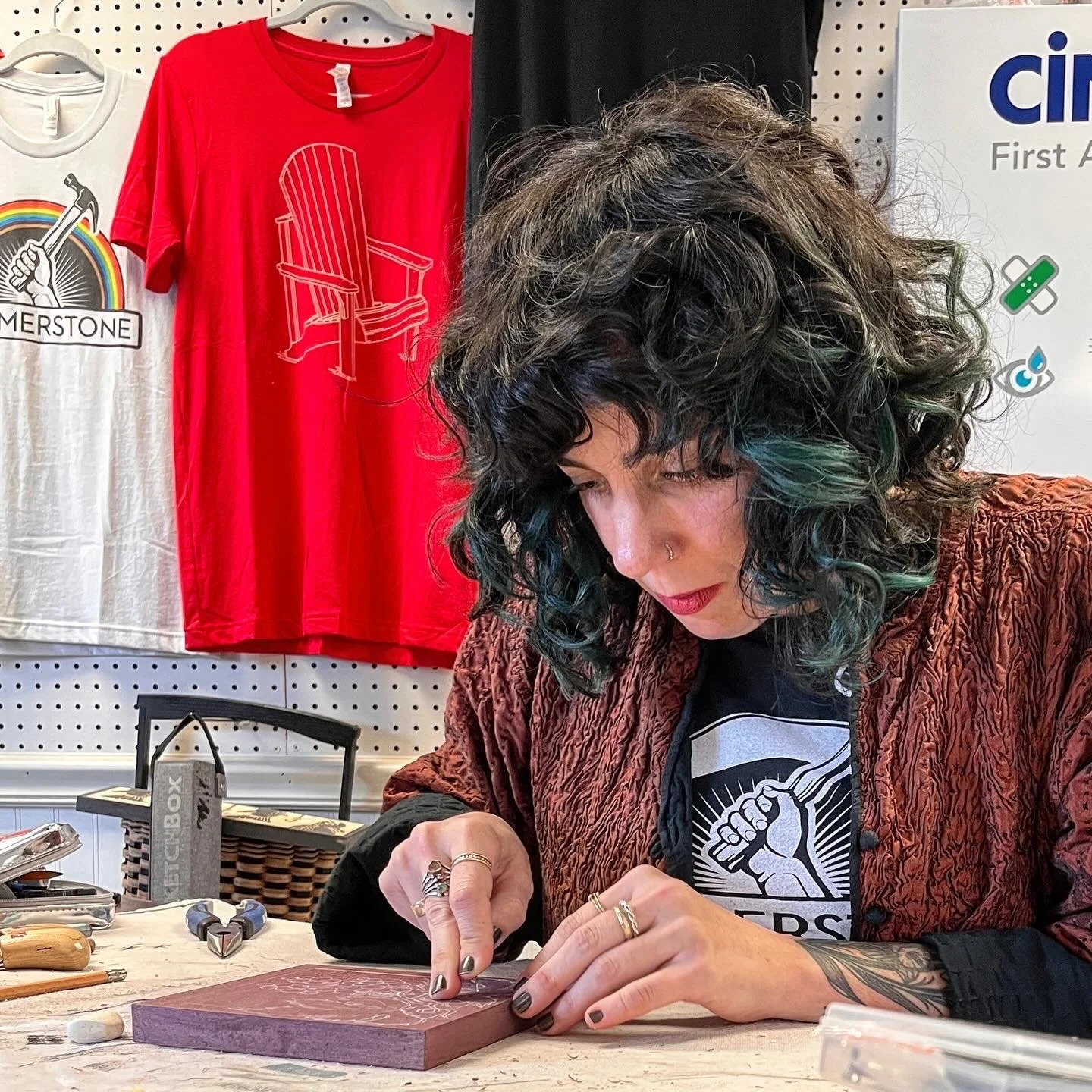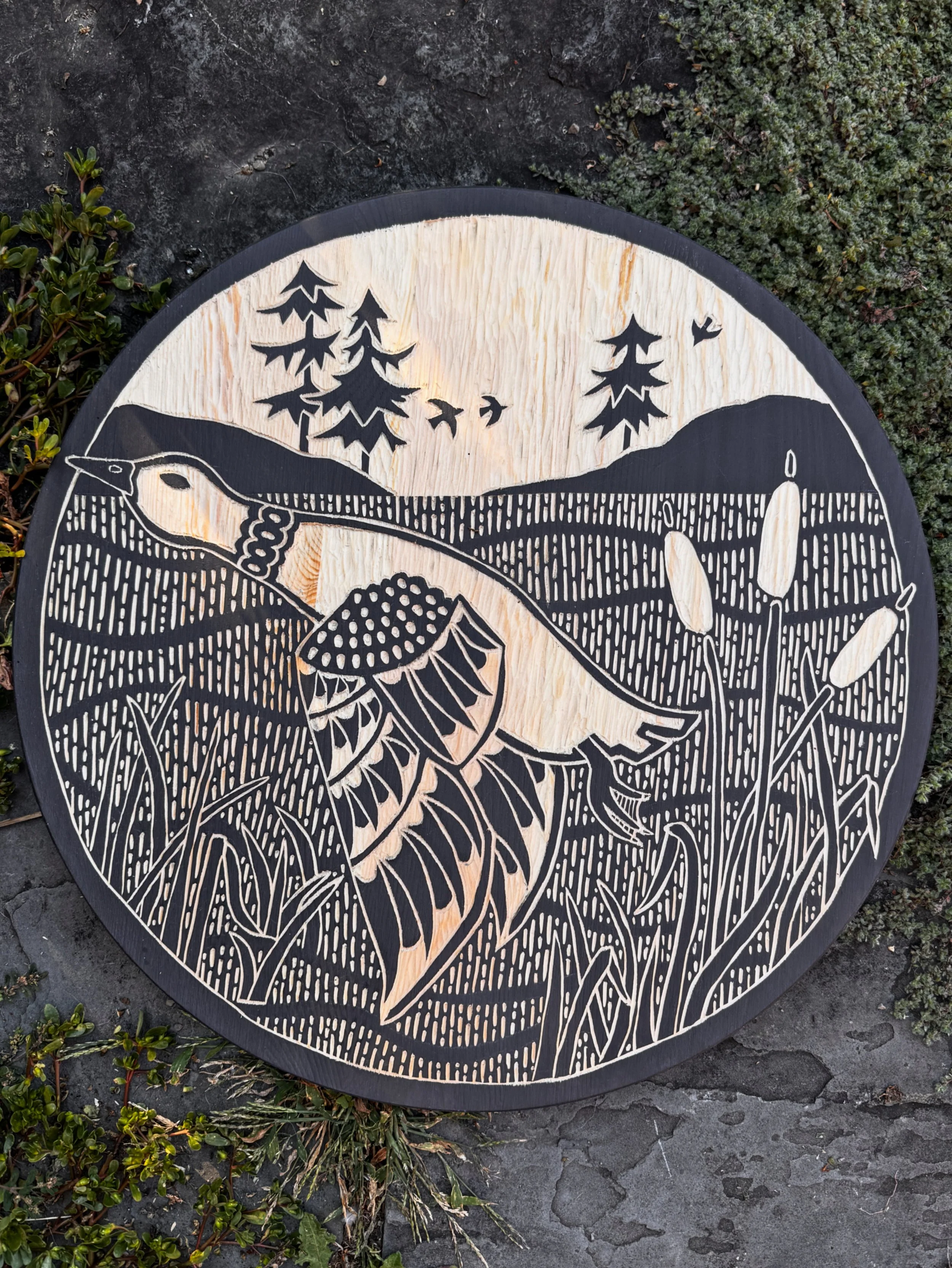Self-taught but Still Teachable
Bee carving at Hammerstone during the Greater Ithaca Art Trail event.
Hey, it’s Bee!
I’ve been experimenting with carving and making wood art since 2020. I started carving linoleum blocks for printing, but the inking process was too messy. Then I tried pyrography (wood burning), but the medium didn’t translate to my art the way I had hoped. So I embarked on an exploration into folk art wood carving, curious and driven by inspiration. My current work lives in the world of relief folk art, carved into pine with small tools. I paint the wood first, then carve the design back out, leaving behind a mix of color, shadow, and tactile texture. It’s a style that feels both rooted and personal: a form of modern folk art shaped by intuition and a love of handmade tradition.
Over the years, my carving process has evolved through trial and error. I’d sketch something out, pick up my tools, and let instinct take over. But when people asked about my technique, like why I carved in a certain way or what tool I used, I often struggled to explain myself. I could show my process but not speak its language. I realized that to grow as an artist, and eventually as a teacher, I needed to rebuild the foundation.
I enrolled in Carving Basics at the Adirondack Folk School, a two-day workshop taught by woodcarver Bob Yorburg. The class covered everything from shop setup and tool maintenance to high relief carving. We learned how to hold and handle tools properly, how to position wood for safety, and even how to use light effectively. Each student created a “study board”, a hands-on record of our progress and reference for future work.
I brought along a few of my favorite tools (including some great finds from Facebook Marketplace). From the start, I knew this wasn’t just a technical class; it was going to challenge me to see the world around me in all of its dimensional glory.
One of Bob’s lessons that stuck with me most was:
“A carving should look at you as much as you look at it.”
That idea of the work engaging the viewer as much as the viewer engages the work shifted something in me. I’ve always carved low relief, graphic pieces; Bob’s style, by contrast, is deeply dimensional. He’s known for carving realistic wood sculptures including carousel horses and intricate ornamental scrolls. But even though our approaches differ, his words reminded me that good carving, no matter the style, should feel alive.
Me and my fellow students holding our study boards, with Bob in the green polo shirt in back.
Bob challenged me to think differently about rigidity and fluidity in design. The nature of folk art is flattened landscapes and simplified forms. At the start of my carving journey that focus was not intentional; it’s just how my brain naturally interprets the world around me.. Bob encouraged me to look for movement in the world: fabric catching a breeze, hair twisting in motion, leaves curling into shadow. Since then, I’ve started noticing movement everywhere. I’m curious to see how this awareness will reshape my future carvings.
We also dove into something I’d never learned before: the Sheffield numbering system. Until this class, I had been labeling my tools with my own numbering just to keep track. Now I understand the universal system used across most brands. This may sound like a small thing, but it connects me to a larger craft tradition and makes it easier to communicate and teach others.
Taking this class gave me vocabulary, confidence and clarity. I now have the words and understanding to share my process meaningfully. It reaffirmed my belief that even self-taught artists benefit from instruction. Classes like this not only sharpen your skills: they connect you with a lineage of makers who’ve been refining these techniques for centuries.
If you’re a self-taught artist, woodworker, carpenter, or builder, I can’t recommend formal instruction enough. You’ll absolutely learn something new, and odds are you’ll also spark ideas in others. The way you approach your craft might inspire your instructor or classmates just as much as they inspire you.
As I continue carving, I’m also looking ahead. My five-year goal is to begin teaching and start sharing the joy and stress relief I’ve found through woodcarving. Having the right terminology and technical foundation gives me a stronger platform to do that. Thanks to Hammerstone, I may accomplish this goal sooner rather than later, *hint, hint*! Stay tuned!
Next up on my skillbuilding journey, I’ll be attending Hammerstone’s Kumiko class. I hope the class will challenge me in similar ways and in ways I haven’t thought of. Every class feels like another step toward becoming the artist and the instructor I aspire to be.
Sometimes, the things we love doing can be transformed just by stepping into a classroom. What starts as curiosity can evolve into confidence, clarity, and connection.
Seek knowledge.
Seek instruction.
Seek fulfillment.
One of my first carvings which was done on birch plywood, a terrible medium for the craft but this was all part of the trial and error.
A much more recent carving on pine. This carving was inspired by the visit from snow geese Cayuga lake experienced last year.




